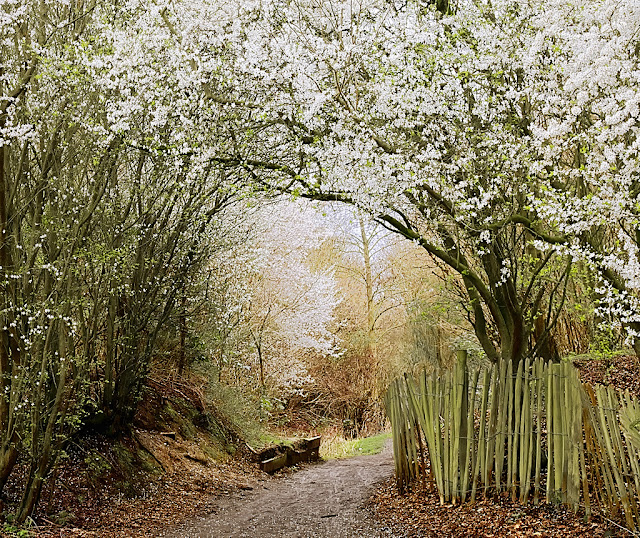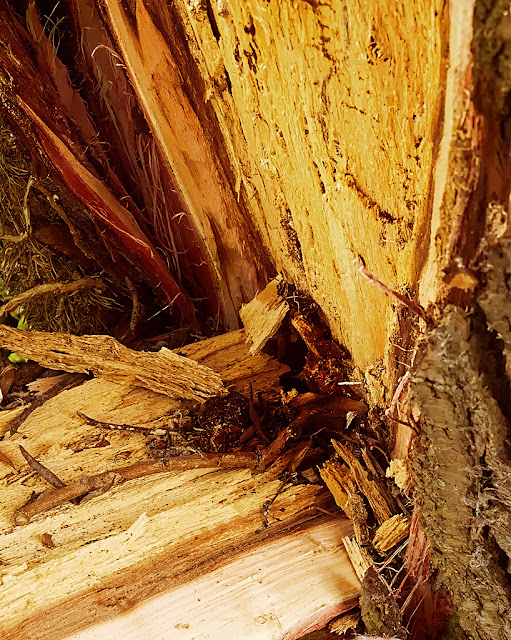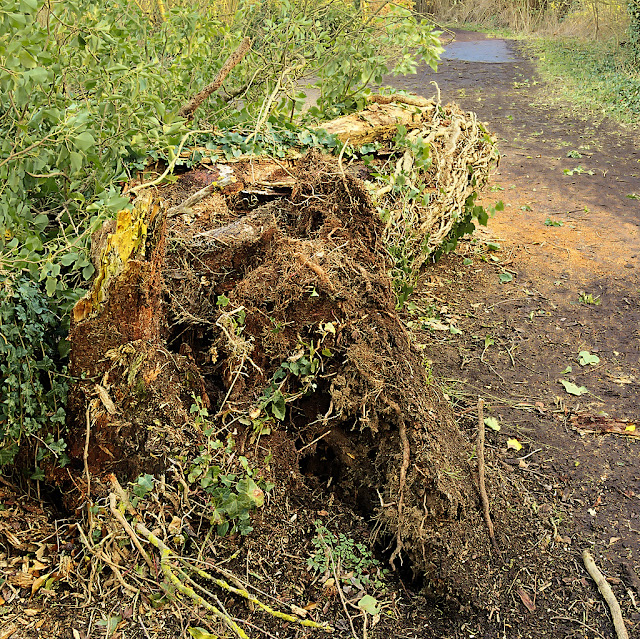 |
| Bank of Cherry Plum Blossom - 15 March 2017 This bank of blossom bordered the path along the southern boundary of the park |
I realise that in writing the second sentence 'It is a good year for plum blossom...' , I risk sounding like a gardener (which I am not) taking proprietorial pride in his crop. Nevertheless, it is an indicator of how much more aware I am becoming of the changing seasons and the differences from one year to the next.
 |
| By Dickerson's Pit - 13 March 2017 At the north end of the park, large bushes like this one laden with blossom could be seen, which ever way I looked. |
I have spent a lot of my life outdoors in the countryside, albeit the compromised landscape of intensive arable farming: as a schoolboy, I chased butterflies and moths; later, I cycled to work; walked at the weekends and on holiday; and, most recently, took the dog for a daily walk. But in all these activities, the changes in the countryside was a backdrop to the main activity; I was aware of the passing seasons, but took little notice of the detail. Changes in the weather was always a more immediate concern.
 |
| Blossom Arch - 12 March 2017 So abundant is the plum blossom that it forms an arch over the path and frames another blossom filled bush beyond. |
I wrote at the start of this blog, that the challenge was to see the park, that was so familiar to me, with new eyes. Comparing this year's tree blossom with that of last year suggests a degree success in that direction.
 |
| Plum Blossom - 12 March 2017 A close up shot shows just how profuse the blossom is |
There seems to be virtually no folklore or legends attached to plum blossom, probably because the plum is not native to the British isles. The cherry plum was originally introduced for its fruit and grafting stock for domestic plums. However, the blossom of the cherry plum is used in one of Dr Edward Bach's Flower Remedies as a remedy for people who are in fear of losing control.
In contrast, where the plum is part of the native flora, in Japan, the blossom is seen as a symbol of spring, and a sign that the worst rigours of winter are past and that better weather is on its way. In China, plum blossom is used for decoration during the spring festival.
 |
| Blossom Among the Hazel Bushes - 13 March 2017 It may simply be because the sun was shining, but this blossom among the bare hazel stems appeared far more obvious than in previous years. |
Originally, I planned to write just a single post about Milton Country Park in March. But there has been such an explosion of blossom, I now have enough material for three posts. I decided to restrict this post to the plum blossom alone because of its importance to the appearance of the park at this time of the year. My next post will be of other blossom in the park during March, followed by a closer look at some of leaf and flower buds developing on the trees and bushes.
Next: Flowers from Hell





